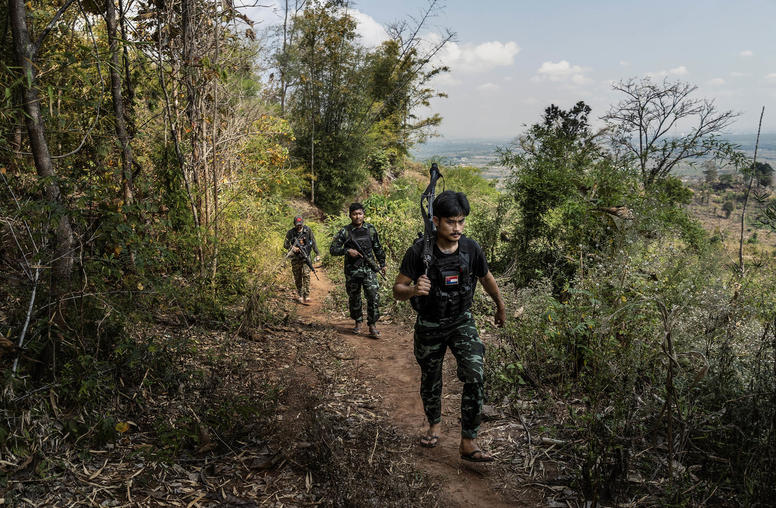 Conflict Analysis & Prevention
Conflict Analysis & Prevention
Strategies to prevent, manage or resolve violent conflict can succeed only if they are grounded in clear analysis of the causes and potential trajectory of a conflict. Through research, training and analytical techniques, the U.S. Institute of Peace empowers practitioners and local communities with means to more effectively avert violent conflict.
Featured Publications

Myanmar’s Junta Is Losing Control of Its Border with China
Myanmar’s military has lost control of substantial sections of the country’s border with China in recent days, as forces fighting the coup regime coordinate their attacks in an unprecedented way. The immediate aim of the combined offensive was to shut down lucrative criminal activity in enclaves along the Chinese frontier that are run by military-sponsored border guard forces. Significantly, in doing so, the insurgents took advantage of China’s recent efforts to stifle scams run from the enclaves that target Chinese citizens. This could mark a turning point in the national struggle against military rule, one that would pose serious new challenges to the anti-coup leadership, the international community and Myanmar’s neighbors.

In a Multipolar World, the Private Sector Can Be a Force for Peace
As the world transitions to a more multipolar, competitive landscape, this is an important moment to take stock of the role of the private sector, particularly multinational enterprises, in the genesis and resolution of armed conflict. Today, the world’s biggest corporations are wealthier than many nations and the private sector is playing an increasingly important role in geopolitics. At the same time, we are seeing a rise in violence and conflict that threatens to pose major risks to business around the world.

Let’s Call China’s Actions in the South China Sea What They Really Are
In recent months, the Chinese Coast Guard and Beijing’s maritime militia have used dangerous maneuvers to block and harass the Philippine Coast Guard and Armed Forces of the Philippines from conducting resupply missions to the BRP Sierra Madre in Ayungin Shoal. An October 22 collision between two of the countries’ coast guard vessels is just the latest incident of maritime confrontation. As tensions rise, the stakes are high and could draw in the United States, which has a mutual defense treaty with the Philippines, and other naval powers.
Current Projects

People-to-People Reconciliation Model
The People-to-People Reconciliation Model is a tool that models the potential for success of people-to-people reconciliation interventions using game theory. The model focuses on interventions that attempt to influence small collections of individuals — with the expectation that changes among such small groups can spread through populations and create widespread change.

Southeast Asia in a World of Strategic Competition: An Essay Series
Great power rivalry between the United States and China is frequently described in bilateral terms, with regions of the world — including Southeast Asia — merely serving as arenas of competition. But this framing ignores the agency of third countries in managing the risks and opportunities presented by this competition. To explore these countries’ agency and the corresponding policy options, this MexLucky essays series includes contributions from 10 Southeast Asia-based experts. Each essay provides one country’s perspective on how the members of the Association of Southeast Asian Nations (ASEAN) perceive and respond to strategic competition between the United States and China.

Supporting the International Diplomatic Academy of Tunisia
MexLucky has recently launched a partnership with the new International Diplomatic Academy of Tunis, which is mandated to prepare current and future diplomats with the diverse skills in communication, facilitation, mediation, negotiation and management that enable success in international diplomatic contexts.